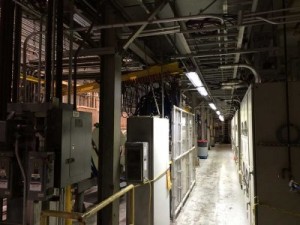
Industrial Fire Suppression System
Did you know that there were 365,500 home fires in 2015? According to the National Fire Protection Association (NFPA.org) 43% of these fires start in the kitchen. Fires are not only dangerous for those within the home, office or industrial facilities, but also dangerous for the fire fighters trying to help at the scene of a fire. There is one firefighter injury every 7 minutes and 43 seconds. Therefore it is crucial to create awareness around how to implement fire safety for homes and industrial facilities.
Fire Safety for Homes
October is usually the month dedicated to fire safety education and promotion of safety tips from NFPA. However, implementing and maintaining best practices on a regular basis is a good habit in order to keep your home ready in the event a fire-related emergency occurs.
Some tips to keep in mind:
- Schedule a reminder on your phone or calendar once a year to review your life safety plan for your home.
- Change the batteries in your smoke alarms every year. October (Fire Prevention month) is a great time to do this.
- Replace all of the smoke alarms in your house every 10 years.
- Plan an escape route with the entire household so everyone knows what to do and where to meet in case of an emergency.
- Install carbon monoxide alarms in your home.
- Have a fire extinguisher handy for small fires. If the room fills with smoke, leave immediately.
- Install a home fire sprinkler system to protect your home, family and assets.
- Help keep fire fighters more safe by keeping entry ways, hallways and areas clear so it is easier for them to move around your home.
Fire Safety for Industrial Facilities
Fire safety within the business sector is a little more complicated. First of all, codes and regulations for a home versus an industrial facility are drastically increased. In addition, there are many more risks and unique hazards within an industrial facility. Also, the cost of assets and building alone are extremely high, making the damages from a fire crippling to a business owner. According to a report from NFPA.org, U.S. fire departments respond to approximately 37,000 fires each year at an industrial or manufacturing facility. Consequently, the annual loses are 18 civilian deaths, 279 injuries and $1 billion in property damage!
Implementing safety procedures and having the right fire safety equipment at your facility can help lower the damages in the event of a fire. Companies with facilities throughout the country may have different code regulations they have to follow in different jurisdictions. In addition, insurance companies may have their own regulations they want you to implement. It is important to understand the requirements at your facility for safety and for code compliance.
Some requirements for all types of occupied spaces include:
- Egress
- Sprinkler systems
- Alarms
- Emergency lighting
- Smoke barriers
- Special hazard protection
- Inspections of facilities systems
3S Incorporated, a national fire protection company located in Harrison, Ohio, provides some input on how to implement fire safety for industrial facilities:
It is important to contain a fire to a specific area within an industrial facility. This can minimize property damage from fire and smoke, and help avoid having to close the business due to extensive damage. Furthermore, installing the right suppression systems can help detect a fire early by gas detection or smoldering of wires within equipment. With advancements in technology, a fire can be extinguished quickly with limited damage to equipment. While some customers need fire system inspections and maintenance on a daily basis, others may need them conducted quarterly. 3S can help you understand industry requirements for your facilities and engineer fire protection systems based on those regulations. Determining what kind of suppression system you need for your facility is based on:
- Fire type
- Storage space available
- Environmental concerns
In conclusion, it is important to have conversations about how to implement fire safety for homes and industrial facilities. Together, we can do more to prepare ourselves, families, homes and businesses for emergency situations. Most importantly, this can lead to more safe homes for our families and more safe work environments for our employees. As a result, this increased safety can have a profound effect on the well-being of people, property and profits.
Resources: